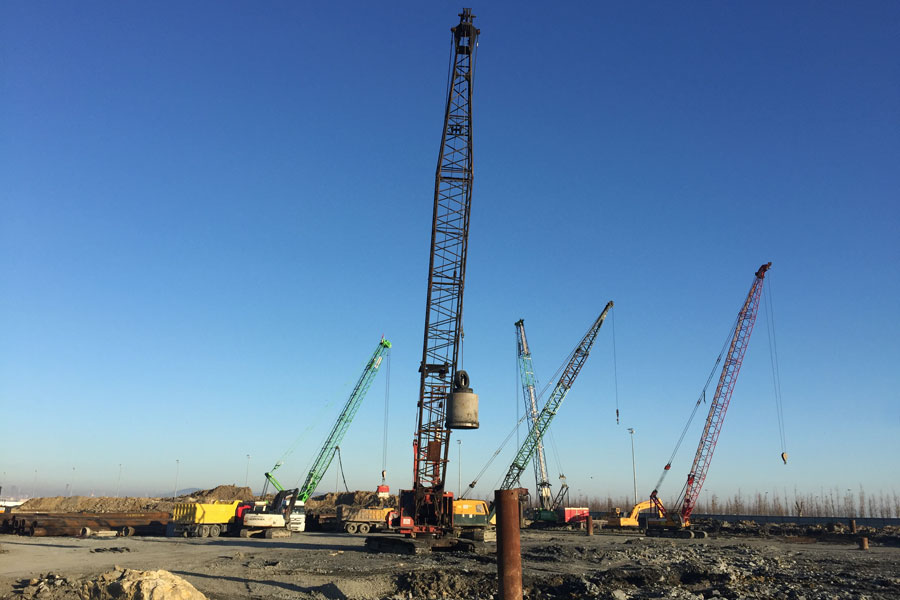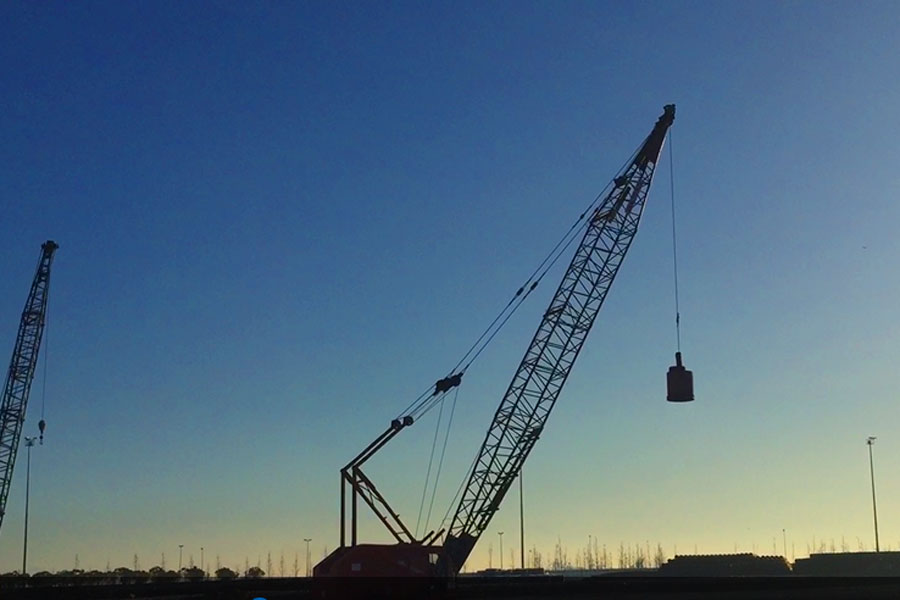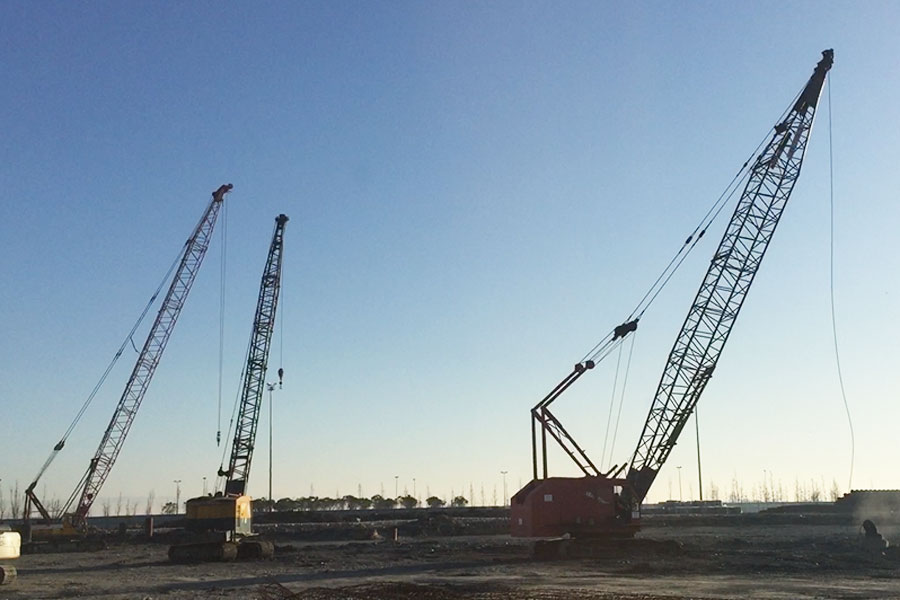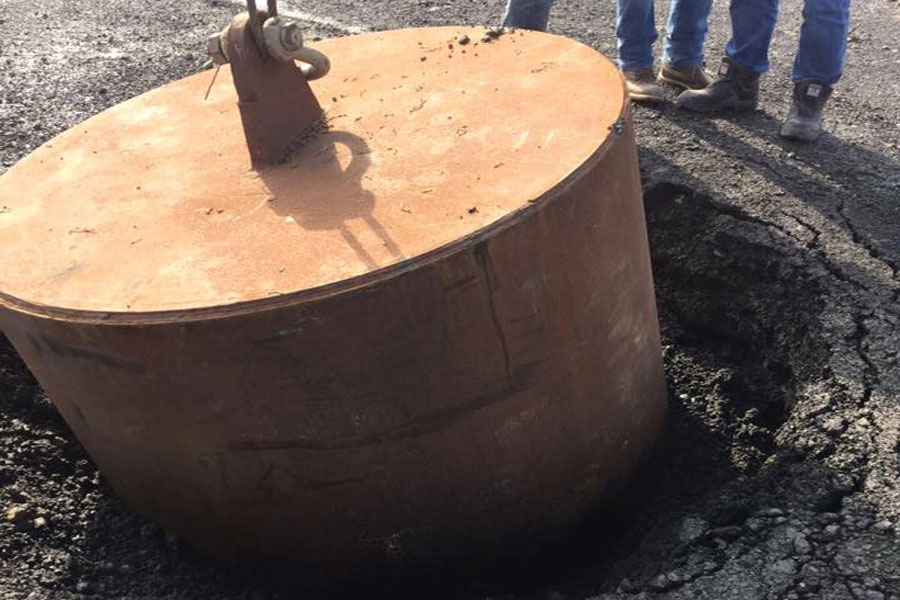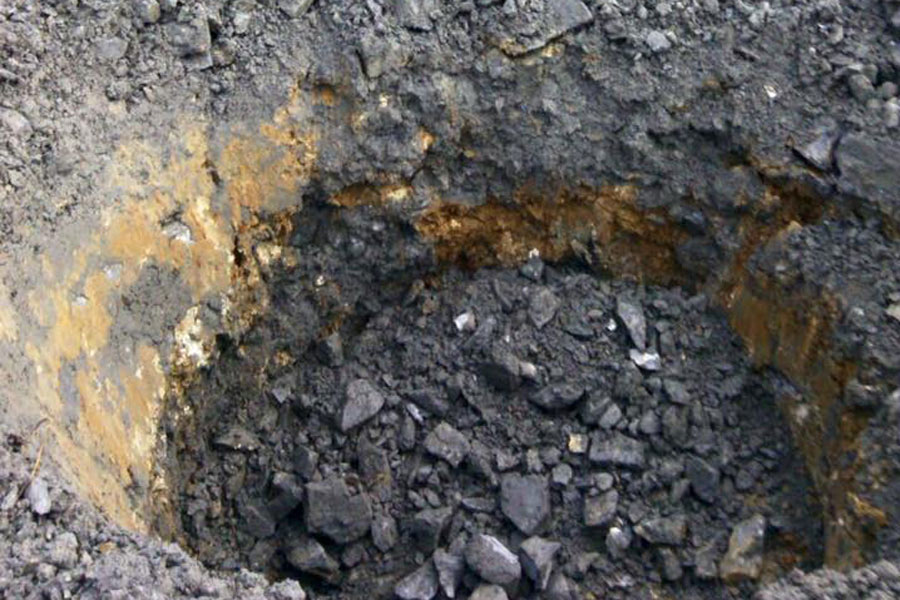The dynamic compaction method can be applied on grounds which are not waterlogged or granular grounds below the ground water level. The main principle is to compress through high energy impacts on the ground which can be compressed and have low carrying capacity. This method causes a sudden settlement on the ground by reducing weight on grounds which are not waterlogged. During dynamic compaction, a trial compaction is made at the site according to the project values of building loads and ground parameters. Swelling and penetration assessments are made from the craters and hammer type, weight, falling number, falling height and grid are decided based on the results.
ArrayCraters are impact points during application can reach 2 m depth. These craters are refilled and made a plain surface. After completion of high energy compression, low energy smoothing press is applied to compress materials in the craters and the upper layer and construction is completed.The dynamic compaction method can be applied on grounds which are not waterlogged or granular grounds below the ground water level. The main principle is to compress through high energy impacts on the ground which can be compressed and have low carrying capacity. This method causes a sudden settlement on the ground by reducing weight on grounds which are not waterlogged.
During dynamic compaction, a trial compaction is made at the site according to the project values of building loads and ground parameters. Swelling and penetration assessments are made from the craters and hammer type, weight, falling number, falling height and grid are decided based on the results.
Craters are impact points during application can reach 2 m depth. These craters are refilled and made a plain surface. After completion of high energy compression, low energy smoothing press is applied to compress materials in the craters and the upper layer and construction is completed.

